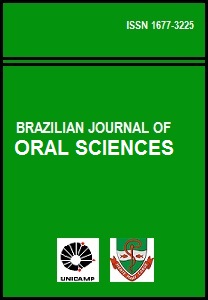Abstract
The evaluation of root canal instrumentation is important to observe the action of endodontic instruments in the root canal walls. Aim: This study introduces a method to standardize the acquisition of images before and after preparing root canals by using cone-beam computed tomography (CBCT). Methods: Sixteen mandibular molars were included in acrylic resin blocks. Samples were inserted in a stable wood box, which was filled with plaster and served as a guide to reinsert the samples. The apparatus was used for the CBCT examination before and after cervical flaring of root canals. The software IcatVision® was used to equalize the images before and after instrumentation with two computers operating at the same time. The measurements between root canal center and the furcation area were determined. The statistical analysis was performed using the t-test for paired samples (á=0.05). Results: The values for dentin thickness in the risk zone before and after root canal flaring with Gates-Gliden drills were 1.096 (± 0.27) mm and 0.742 (± 0.24) (p<0.01), respectively. Conclusions: The proposed method assures the same positioning of the samples before and after root canal preparation. It is extremely important, as any mesiodistal or buccolingual movement can produce a different topogram for comparison procedures.The Brazilian Journal of Oral Sciences uses the Creative Commons license (CC), thus preserving the integrity of the articles in an open access environment.
Downloads
Download data is not yet available.

